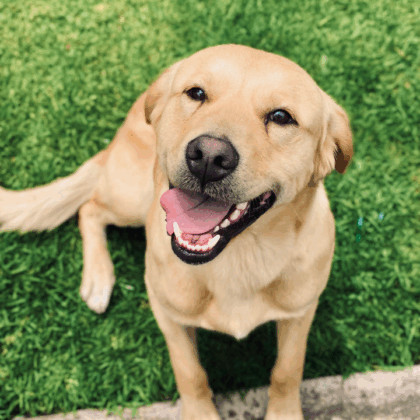A handler approached Suzanne at one of her seminars, frustration evident in every word. “No matter what technique we use, my dog sits crooked. We’ve been working on this for over a year with my instructor, but nothing works. We’re pretty sure the dog is just being lazy.”
One look. That’s all it took.
Suzanne observed the dog moving with his entire body bent slightly to the right, tail hanging over his right hock instead of straight down. When he sat, he couldn’t sit straight because he couldn’t even walk straight. A structural issue, not a training problem.
One year. Countless training sessions. Frustration for both dog and handler. Thousands of dollars in training fees. All because no one had the observation skills to really see the dog.
This isn’t a dramatic exception – it’s a perfect example of what happens when we don’t develop systematic observation skills. We see the symptom (crooked sit) and immediately jump to solutions (more training) without taking time to understand what we’re actually observing.
The High Cost of Assumptions
How much time, money, and emotional energy do we waste treating symptoms instead of causes? How many training problems would solve themselves if we simply saw what was really happening?
Consider the hidden costs of poor observation:
Training sessions that address the wrong problem, equipment that doesn’t match the dog’s actual needs, veterinary issues that go undetected until they become serious, behavioral problems that escalate because early warning signs were missed.
Frustration when “proven techniques” don’t work, guilt over using unnecessary equipment or techniques, damaged relationships when we blame dogs for problems they can’t control.
Losing the chance to prevent problems before they develop.
Most importantly, there’s the cost to the dog – being misunderstood, corrected for things beyond their control, never having their real needs addressed.
What Skilled Observation Reveals
When experienced observers examine a dog, they’re not just looking at the presenting problem. They’re seeing the whole picture: how the dog moves through space, how they orient to their handler, what environmental factors might be influencing behavior, how physical structure affects function.
This holistic approach often reveals information that completely changes the training plan. The “aggressive” dog who’s actually in pain. The “stubborn” dog who can’t hear the cues properly. The “anxious” dog who’s responding normally to genuinely threatening situations in their environment.
Skilled observation is not only about seeing more (and you do!). It’s about understanding how everything connects. Physical structure affects movement patterns. Movement patterns influence behavior choices. Behavior choices create training outcomes. Miss any link in this chain and your training plan targets the wrong level of the problem.
The Detective Approach
“You see, but you do not observe,” Sherlock Holmes famously told Dr. Watson. The detective understood that looking and seeing are different skills entirely. Looking is passive – your eyes take in information. Seeing requires active interpretation, pattern recognition, understanding of what the details mean individually and collectively.
Holmes knew that no detail is insignificant when you’re trying to solve a mystery. The same principle applies to understanding dogs. That slight hesitation before sitting might indicate knee discomfort. The brief look away during training could signal growing anxiety.
But here’s what makes observation truly powerful: it’s not just about collecting more details. It’s about understanding how those details create patterns that reveal the deeper story.
The Prevention Dividend
Better observation skills pay dividends in every area of work with dogs:
Preventive: Catching problems in their early stages when they’re easier to address. Recognizing physical issues before they become serious. Seeing stress building before it erupts into reactive behavior.
Diagnostic: Understanding the real causes behind behavioral symptoms. Distinguishing between training problems and physical issues. Recognizing environmental factors that influence behavior.
Therapeutic: Developing training plans that address actual needs rather than perceived problems. Building on natural strengths instead of fighting against structural limitations. Creating positive experiences that support real learning.
Relationship: Seeing each dog as the unique individual they are. Responding to their actual communications rather than our assumptions about what they mean. Building trust through accurate understanding.
The Sacred Act of Really Seeing
Beyond the practical benefits lies something deeper: the recognition that truly seeing another being is a sacred act of love. When we rush to judgment, apply generic solutions, or project our assumptions onto dogs, we miss the opportunity for genuine relationship.
Every dog has important information to share about their needs, their capabilities, their concerns, their joys. But they can only share this information through their behavior, their body language, their movement patterns.
This is what skilled observation offers: the ability to see dogs as they actually are rather than as we expect them to be. It’s a learnable skill, but it requires systematic development just like any other professional competency.
Your dog is trying to tell you something right now. Developing the skills to listen changes everything.
Develop pattern recognition – like Karl von Frisch spending decades observing honey bees until he decoded their “waggle dance” communication system.
Create effective field notes – capturing complex, fast-moving behavior in ways that remain meaningful months later.
Practice scientific inquiry – approaching each interaction with curiosity, working hypotheses, and real-world research skills.

